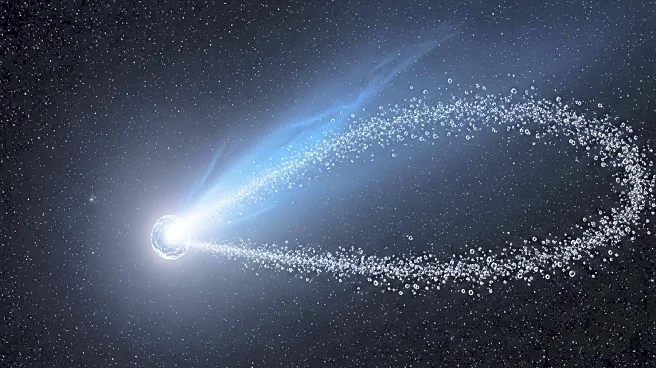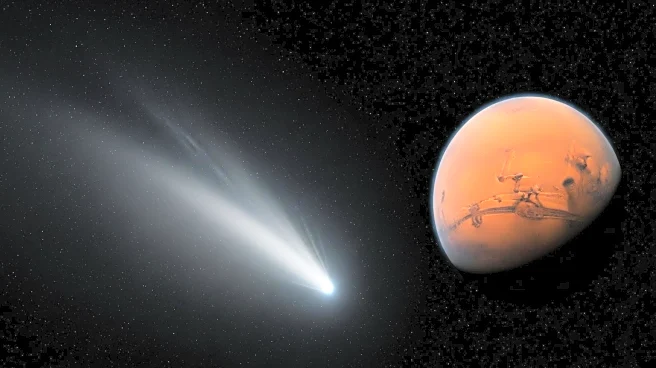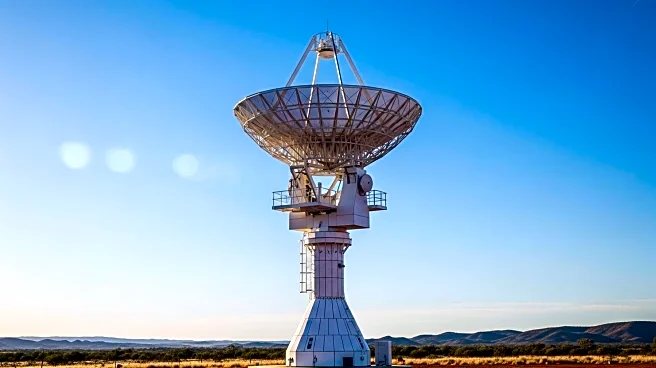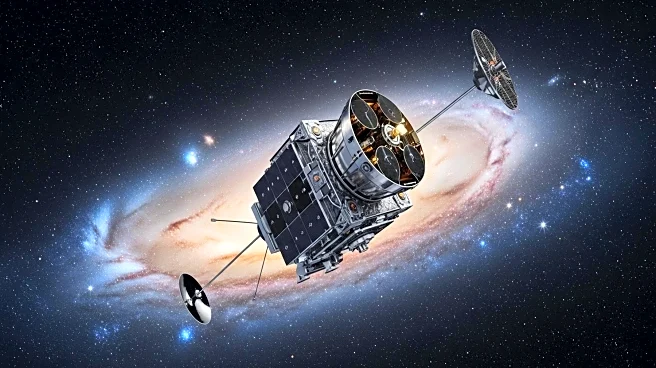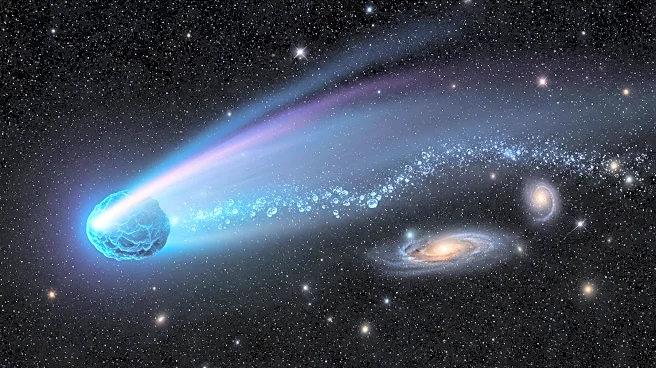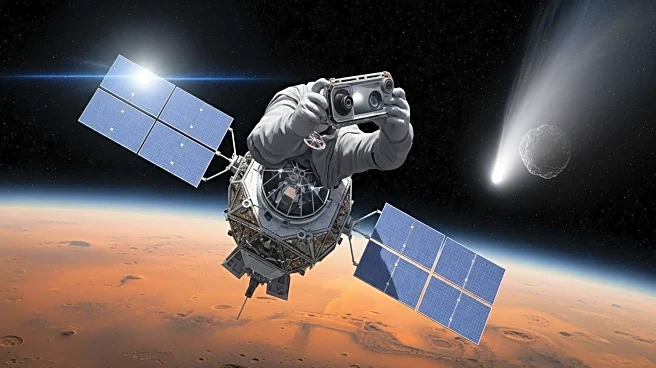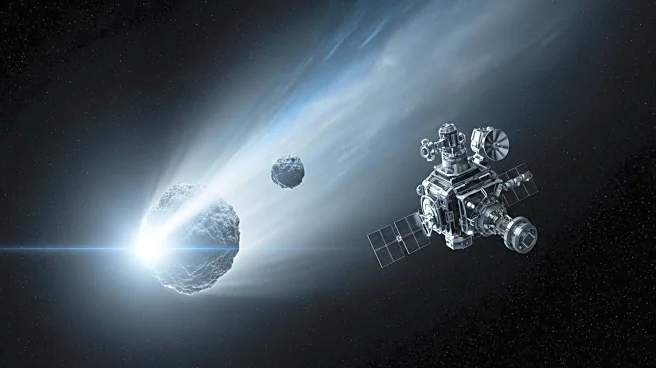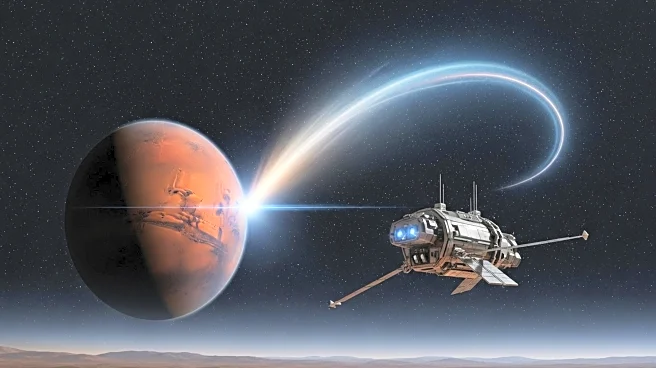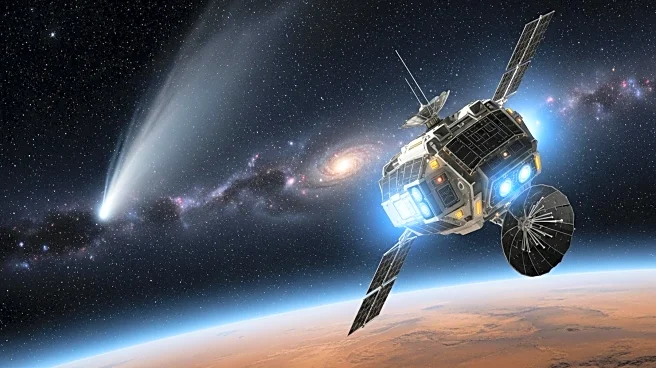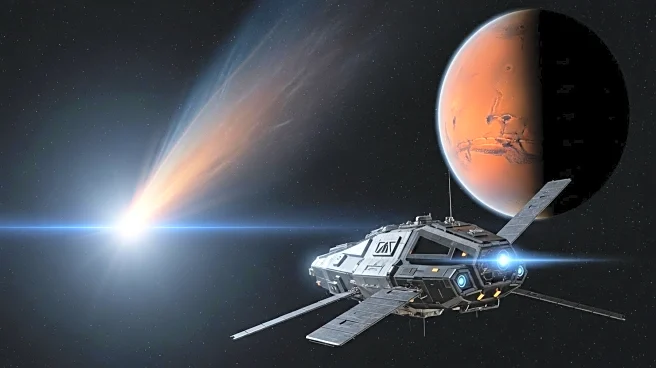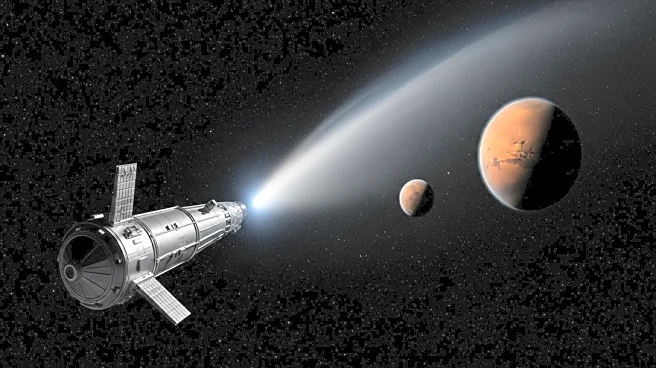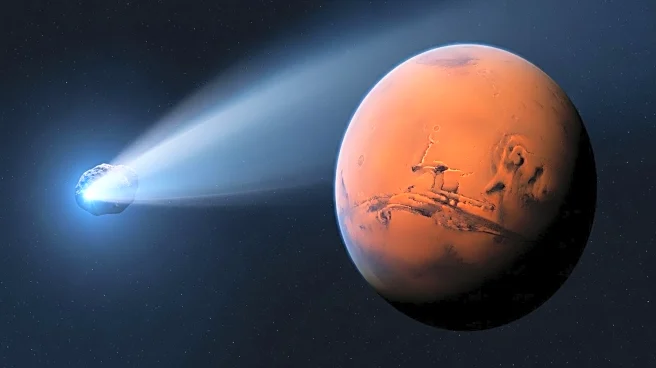What is the story about?
What's Happening?
Scientists using NASA's Neil Gehrels Swift Observatory have detected water leaking from interstellar comet 3I/ATLAS at a rate comparable to a fire hose running at full blast. This comet, only the third known object from another star system observed in our solar neighborhood, is losing water at a rate of approximately 40 kilograms per second. The detection of water allows astronomers to compare 3I/ATLAS with comets native to our solar system, providing insights into the chemistry of distant planetary systems. The comet was observed at a distance where water ice typically does not vaporize, suggesting a high level of activity.
Why It's Important?
The discovery of water leaking from 3I/ATLAS is crucial for understanding the composition and behavior of interstellar objects. It provides evidence that the ingredients for life's chemistry are not unique to our solar system, offering a glimpse into the potential for life elsewhere in the universe. This finding also challenges existing theories about comet formation and activity, as 3I/ATLAS exhibits higher activity levels than typical solar system comets. The study of such interstellar visitors can reshape our understanding of planetary systems and the conditions that lead to the formation of comets.
What's Next?
The European Space Agency plans to continue observing 3I/ATLAS, with its Jupiter Icy Moons Explorer (JUICE) set to study the comet after its closest approach to the sun. This observation is expected to provide further insights into the comet's activity and composition. The data collected could enhance our understanding of interstellar comets and their role in the broader cosmic environment.
AI Generated Content
Do you find this article useful?
